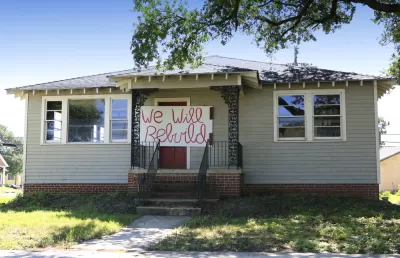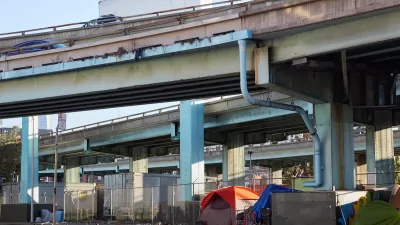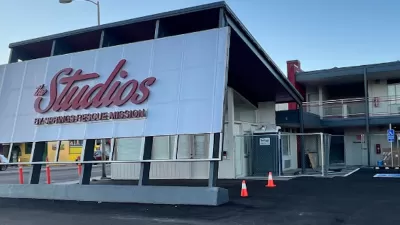Homelessness spiked in New Orleans after Hurricane Katrina. But the city has made substantial progress in providing housing and services to keep people off the streets.

New Orleans has reduced homelessness by 90 percent since 2007, when Hurricane Katrina left more than 11,600 people without places to live. WBUR reporter Jeremy Hobson interviews Martha Kegel, executive director of the non-profit coalition Unity of Greater New Orleans, about which strategies worked best to solve the city's crisis.
Because people continue to lose their homes—thanks, Kegel says, to gentrification and a lack of affordable housing—advocates use a metric called "functional zero," meaning that the number of homeless people never exceeds the number of people being rehoused. New Orleans has achieved functional zero in both veteran and family homelessness.
The basis of their success is a Housing First approach and wraparound services: first, provide people an apartment, and then provide services to ensure their stability and quality of life. Unity also went to Congress to procure a rental assistance fund.
Wraparound services can require comprehensive individual attention, so effectiveness at a large scale requires close collaboration among the Veterans Administration, the Housing Authority, and other organizations. But, Kegel notes:
"This is a very cost-effective approach: compare constantly cycling in and out of jail on charges that wouldn't even be relevant if they had an apartment, that are costing the taxpayers a lot of money … to a relatively small amount of money to pay for some rent assistance."
FULL STORY: How New Orleans Reduced Its Homeless Population By 90 Percent

Alabama: Trump Terminates Settlements for Black Communities Harmed By Raw Sewage
Trump deemed the landmark civil rights agreement “illegal DEI and environmental justice policy.”

Planetizen Federal Action Tracker
A weekly monitor of how Trump’s orders and actions are impacting planners and planning in America.

The 120 Year Old Tiny Home Villages That Sheltered San Francisco’s Earthquake Refugees
More than a century ago, San Francisco mobilized to house thousands of residents displaced by the 1906 earthquake. Could their strategy offer a model for the present?

Ken Jennings Launches Transit Web Series
The Jeopardy champ wants you to ride public transit.

BLM To Rescind Public Lands Rule
The change will downgrade conservation, once again putting federal land at risk for mining and other extractive uses.

Indy Neighborhood Group Builds Temporary Multi-Use Path
Community members, aided in part by funding from the city, repurposed a vehicle lane to create a protected bike and pedestrian path for the summer season.
Urban Design for Planners 1: Software Tools
This six-course series explores essential urban design concepts using open source software and equips planners with the tools they need to participate fully in the urban design process.
Planning for Universal Design
Learn the tools for implementing Universal Design in planning regulations.
Clanton & Associates, Inc.
Jessamine County Fiscal Court
Institute for Housing and Urban Development Studies (IHS)
City of Grandview
Harvard GSD Executive Education
Toledo-Lucas County Plan Commissions
Salt Lake City
NYU Wagner Graduate School of Public Service





























